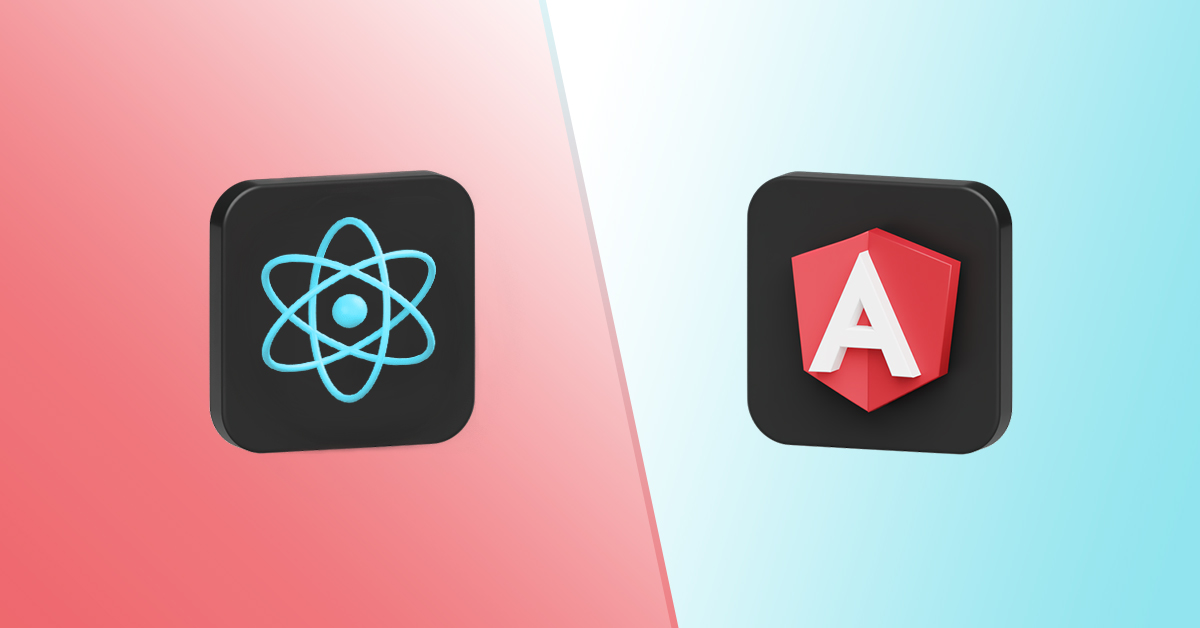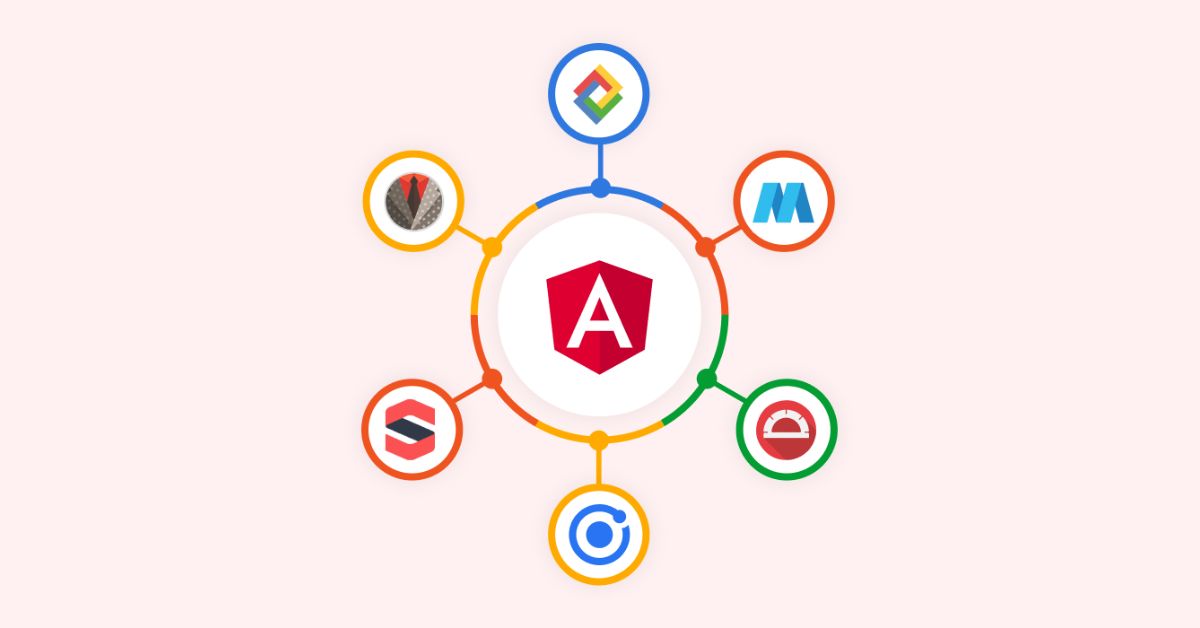Are you embarking on a new front-end development project and trying to decide between React and Angular? Well, you’re not alone! These two popular JavaScript frameworks have been dominating the web development landscape for years, each with its own unique set of features and advantages. But fear not, dear reader! In this blog post, we will dive deep into the world of React vs Angular to help you make an informed decision for your next front-end adventure. So grab your coding tools and join us as we unravel the mysteries of these powerful frameworks!
Before we delve into the nitty-gritty of React vs Angular, let’s start with a quick overview of each framework.
What is React?
React is a popular JavaScript library for building user interfaces. It was developed by Facebook and has gained significant traction in the web development community. With React, developers can create reusable UI components that make it easier to build complex applications.
What is the advantage of React?
Advantage of using React for front-end development is its component-based architecture. With React, you can break down your user interface into reusable components, making it easier to manage and maintain your codebase. This modular approach also allows for better collaboration among team members and promotes code reusability.
Another advantage of React is its virtual DOM (Document Object Model) implementation. Instead of directly manipulating the actual DOM elements, React creates a virtual representation of the UI in memory and efficiently updates only the necessary parts when changes occur. This results in faster rendering performance compared to traditional methods.
React also provides excellent developer tools and a vast ecosystem with numerous third-party libraries and frameworks that enhance its capabilities. Whether you need state management with Redux or routing with React Router, there are plenty of options available to extend the functionality of your React applications.
Additionally, one cannot ignore the popularity and community support behind React. It has gained widespread adoption among developers worldwide, which means there are abundant resources, tutorials, and forums where you can seek help if needed.
Build Your Web Apps with React JS!
What is Angular?
Angular, often referred to as “AngularJS” or simply “Angular,” is a popular front-end development framework developed by Google. It is an open-source JavaScript-based framework that allows developers to build dynamic and robust web applications.
What is the advantage of Angular?
Angular is a powerful and widely used front-end development framework that offers numerous advantages for developers. One of the key advantages of Angular is its ability to create dynamic, single-page applications (SPAs). With Angular, you can build complex web applications with ease, thanks to its robust features and comprehensive toolkit.
One major advantage of using Angular is its two-way data binding feature. This allows any changes made in the user interface to be instantly reflected in the underlying data model and vice versa. It eliminates the need for manual synchronisation between the view and model components, making development faster and more efficient.
Another benefit of Angular is its modular architecture. It follows a component-based approach, where different parts of an application are broken down into reusable components. This promotes code reusability, maintainability, and scalability.
Furthermore, Angular provides excellent support for testing through tools like Karma and Protractor. These tools enable developers to write unit tests as well as end-to-end tests easily, ensuring high-quality code.
Additionally, Angular has a large community base with extensive documentation available online. This makes it easier for developers to find solutions or seek help when facing challenges during development.
Elevate Your Apps with Angular’s Dynamic Capabilities
Difference: React vs Angular
Angular and React are both popular frameworks used for front-end development, but they have distinct differences in terms of architecture, learning curve, and performance.
Architecture: Angular is a full-fledged framework that follows the MVC (Model-View-Controller) pattern. It provides a ready-to-use structure with features like two-way data binding and dependency injection. On the other hand, React is a JavaScript library that focuses on building reusable UI components. It follows a one-way data flow approach where changes in data trigger component re-rendering.
Learning Curve: Angular has a steep learning curve due to its extensive documentation and complex concepts like decorators and TypeScript integration. In contrast, React has a simpler learning curve as it only requires knowledge of JavaScript fundamentals.
Performance: React outperforms Angular in terms of rendering speed because of its virtual DOM implementation. With virtual DOM, React efficiently updates only the necessary parts of the user interface when there are changes in data. However, Angular’s two-way data binding can impact performance since any change triggers updates across all bound elements.
Choosing between Angular or React depends on your project requirements and personal preferences. While Angular offers an opinionated solution with robust features for large-scale applications, React provides flexibility with its lightweight nature focused on building reusable components.
Which is Better for Your Next Front-end Development?
When it comes to choosing the right framework for your next front-end development project, deciding between React and Angular can be quite a task. Both frameworks have their own unique advantages and cater to different needs. It ultimately depends on the specific requirements of your project and personal preferences.
React is known for its simplicity and flexibility. It allows developers to build reusable UI components, making it easier to maintain codebases and update interfaces efficiently. Additionally, React’s virtual DOM ensures faster rendering performance, resulting in smoother user experiences.
On the other hand, Angular offers a comprehensive solution with built-in features like dependency injection, two-way data binding, and a robust CLI (Command Line Interface). This makes it ideal for larger-scale projects that require structure and organization from the start.
The difference between React and Angular lies in their approach to building web applications. React focuses on creating interactive user interfaces while allowing developers to choose additional tools as per their requirements. On the contrary, Angular provides an opinionated framework that covers various aspects of application development out-of-the-box.
Selecting between React or Angular boils down to factors such as project complexity, team expertise levels, scalability needs, time constraints,and personal preferences regarding coding styles.

You might want to read
Basics of Java Microservices: Frameworks, Examples & Use Cases
Last words
In the ongoing debate of React vs Angular, there is no definitive winner. Both frameworks have their own strengths and weaknesses, and the choice between them ultimately depends on your specific project requirements and personal preferences.
React has gained immense popularity for its simplicity, flexibility, and performance. It offers a component-based architecture that allows developers to build reusable UI components easily. With its virtual DOM implementation, React ensures efficient rendering of updates, resulting in better performance.
On the other hand, Angular is a comprehensive framework that provides many out-of-the-box features such as dependency injection, two-way data binding, and powerful templating capabilities. It also has excellent support from Google and a large community of developers.
When deciding between React and Angular for your next front-end development project, it’s important to consider factors such as project complexity, scalability needs, learning curve for team members involved in development or maintenance efforts.
If you prefer a simpler approach with more control over your application’s structure and enjoy working with JavaScript libraries rather than full-fledged frameworks , then React might be the right choice for you. On the other hand if you are looking for an opinionated framework with built-in tools like testing utilities or routing capabilities without having to make additional decisions about what third-party library fits best into your stack then Angular could suit your needs better.
FAQs
Angular is a more complex framework than React, so it is generally considered to be more difficult to learn. However, React is still a powerful framework, and it can be used to build complex applications.
According to the 2022 Stack Overflow Developer Survey, React is the most popular JavaScript framework, with Angular coming in second. This suggests that there is more demand for React developers than Angular developers.
React is preferred over Angular for a few reasons. First, React is a more lightweight framework, which makes it faster and more efficient. Second, React is more modular, which makes it easier to maintain. Third, React has a larger community of developers, which means that there is more support available.
The main difference between React and Angular is that React is a library, while Angular is a framework. This means that React is more focused on rendering the user interface, while Angular provides more features for things like routing, state management, and dependency injection.
Angular is generally considered to be more difficult to learn than React. This is because Angular is a more complex framework with a steeper learning curve.
There are a few reasons why you might choose React over Angular. First, React is a more lightweight framework, which makes it faster and more efficient. Second, React is more modular, which makes it easier to maintain. Third, React has a larger community of developers, which means that there is more support available.















